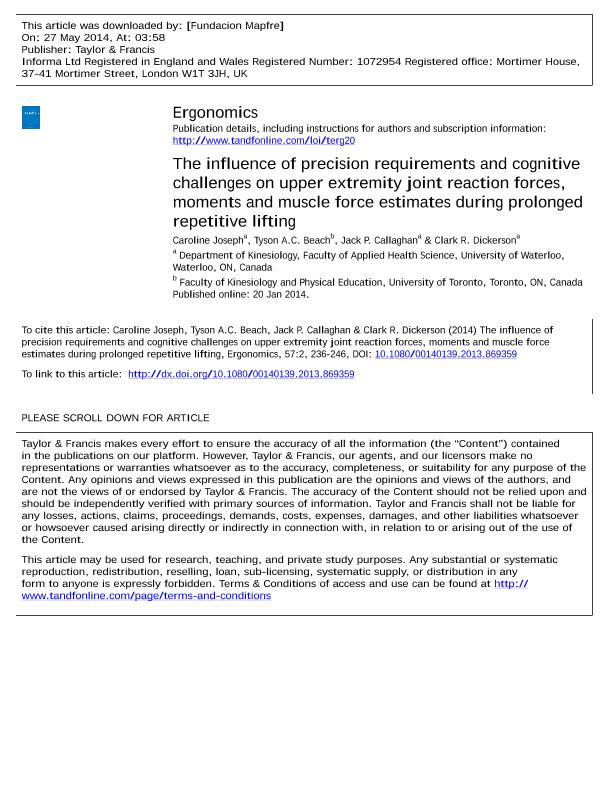The Influence of precision requirements and cognitive challenges on upper extremity joint reaction forces, moments and muscle force estimates during prolonged repetitive lifting

Contenido multimedia no disponible por derechos de autor o por acceso restringido. Contacte con la institución para más información.
| Tag | 1 | 2 | Valor |
|---|---|---|---|
| LDR | 00000cab a2200000 4500 | ||
| 001 | MAP20140019236 | ||
| 003 | MAP | ||
| 005 | 20140530130413.0 | ||
| 008 | 140527e20140203esp|||p |0|||b|spa d | ||
| 040 | $aMAP$bspa$dMAP | ||
| 084 | $a875 | ||
| 245 | 0 | 4 | $aThe Influence of precision requirements and cognitive challenges on upper extremity joint reaction forces, moments and muscle force estimates during prolonged repetitive lifting$cCaroline Joseph...[et.al] |
| 520 | $aProlonged repetitive lifting is a whole-body exertion. Despite this, the roles and physical exposures of the upper extremities are frequently neglected. The influence of precision requirements and cognitive distractions on upper extremity responses when lifting was evaluated by quantifying several biomechanical upper extremity quantities. Nine participants completed four 30-min lifting tasks with and without simultaneous cognitive distractions and/or precision placement constraints. Specific metrics evaluated were joint reaction forces and moments (wrist, elbow and shoulder) and modelled shoulder muscle forces (38 defined shoulder muscle mechanical elements). The addition of a precision requirement increased several metrics by up to 43%, while the addition of the cognitive distraction task had minimal influence. Furthermore, several metrics decreased by up to 14% after the first 10 min of lifting, suggesting a temporal change of lifting strategy. | ||
| 773 | 0 | $wMAP20100019818$tErgonomics : the international journal of research and practice in human factors and ergonomics$dOxon [United Kingdom] : Taylor & Francis, 2010-$x0014-0139$g03/02/2014 Volumen 57 Número 2 - febrero 2014 |

